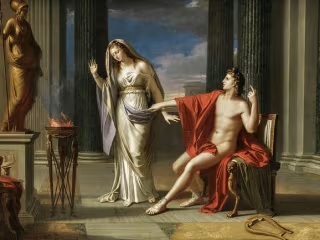Selene: Goddess of the Moon
0
Ghostwriter
Blog Writer

The Greek pantheon includes many deities, each possessing unique attributes and profound roles in the cosmic order. Among them, Selene, the Goddess of the Moon, radiates with distinctive brilliance. Her dominion over the celestial sphere and her intimate connection with the night sky have fascinated storytellers, poets, and scholars throughout generations. This exploration aims to delve into Selene’s multifaceted identity by examining her honorific titles, intrinsic abilities, distinctive characteristics, enduring traits, emblematic symbols, and the hallowed festivals and rituals orchestrated in reverence of her divine persona.
Overview of Selene
Selene, or Luna in Roman mythology, is a luminous and enchanting goddess who personifies the moon in Greek mythology. Her name, originating from the Greek term “selas,” which means “light” or “brightness,” accurately characterizes her as the brilliant celestial body that illuminates the night sky (“SELENE – Greek Goddess of the Moon (Roman Luna)”). Selene is a Titaness, a divine being of the second generation, who was born from the union between the titans Hyperion and Theia. This lineage positions her among the esteemed deities of ancient Greek mythology.
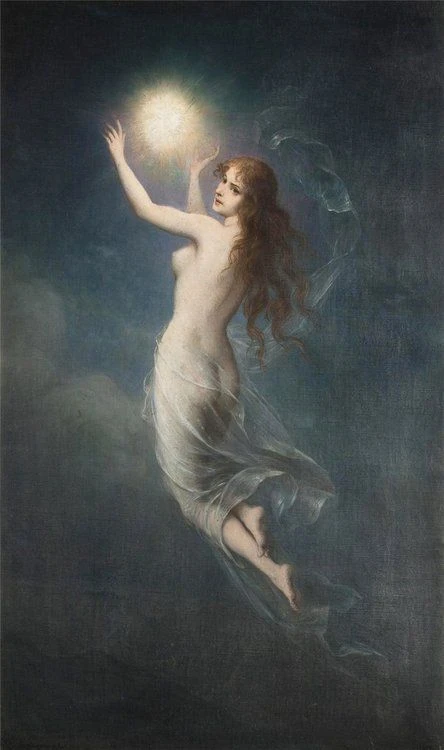
Source: Pinterest
Titles
Mother of Dreams
Queen of the Night
Light Bearer
Abilities
Selene possesses a remarkable repertoire of abilities integral to her divine identity. Her most prominent talent is the power to illuminate the night sky, which she accomplishes while riding her celestial chariot through the heavens. Her gentle, silvery glow graces the nocturnal landscape with ethereal beauty and serves as a guiding beacon, offering solace and direction to those who journey under her watchful eye (“SELENE – Greek Goddess of the Moon (Roman Luna)”).
Moreover, Selene’s profound connection to the moon extends her influence over the earthly realm, primarily the tides. The moon’s gravitational pull is believed to govern the ebb and flow of waves, a phenomenon that has earned her recognition as a goddess of immense natural significance (Miate). In addition to her role as a luminary and tide-controller, Selene is intrinsically linked to the passage of time. The ever-shifting phases of the moon, over which she presides, serve as a celestial calendar, marking the progression of months and seasons. Selene embodies the concept of cyclical renewal in this capacity and underscores the eternal nature of the cosmos, perpetually waxing and waning in the night sky (Dhar). Selene’s influence extends beyond the divine through her abilities, touching the very fabric of earthly existence.
Characteristics
Selene’s physical appearance is a subject of great fascination and admiration. She is often depicted as a divine entity of unparalleled beauty, evoking a sense of awe and enchantment. Her skin is described as moonlit, enhancing her ethereal allure. Her eyes, often compared to twin silver orbs, possess a mesmerizing quality that captivates all who gaze upon her, further emphasizing her celestial nature and beguiling charm (“SELENE – Greek Goddess of the Moon (Roman Luna)”).
Artistic and poetic depictions of Selene consistently portray her as a paragon of grace and elegance, befitting her divine status. Her attire, frequently comprising a shimmering, translucent gown that mirrors the moon’s soft radiance, adds to her mystical beauty and grace, reinforcing her role as the luminous goddess of the night sky. Additionally, her long, flowing hair is often compared to moonlight dancing upon the water, imbuing her with an almost mystical aura that inspires admiration and reverence.
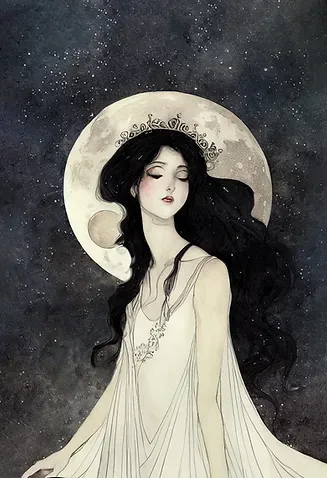
Source: Wild Empress
Traits
Beyond her ethereal beauty, Selene possesses a constellation of personality traits that reflect her deep connection to the moon and the nocturnal realm. Her mysterious nature stands out prominently among these traits, cloaking her in an aura of enigma, much like the hidden side of the moon she represents. Perceived as a goddess who conceals her thoughts and emotions behind a veil of secrecy, Selene invites intrigue and curiosity (“SELENE – Greek Goddess of the Moon (Roman Luna)”). However, she is also regarded as a compassionate and nurturing figure, and her gentle moonlight provides solace and comfort to those who traverse the darkness.
In addition to these traits, Selene embodies a sense of independence and self-reliance. She symbolizes the self-sufficiency and autonomy associated with the moon’s solitary journey. Her role as a guardian of the night highlights her freedom, guiding and protecting those who find themselves under her luminous gaze (“Selene”). In this constellation of traits, Selene’s personality emerges as a complex and profound reflection of her celestial dominion, transcending the boundaries of the night and inviting contemplation on the mysteries of the cosmos.
Symbols
The imagery associated with Selene is profoundly symbolic and meaningful. Among her most recognizable symbols is the crescent moon, which represents the cyclical nature of the cosmos and the passage of time. This celestial motif captures the moon’s various phases, from the waxing crescent’s delicate sliver to the waning crescent’s enchanting glow (“SELENE – Greek Goddess of the Moon (Roman Luna)”). Selene’s heavenly chariot, drawn by horses or oxen, is also a powerful symbol of her nightly journey across the heavens. This luminous odyssey illuminates the night sky and guides those who traverse the darkness, emphasizing her role as a celestial timekeeper and bestower of moonlight. Additionally, nocturnal creatures such as owls are often associated with Selene, further highlighting her intimate connection with the night and her role as the guardian and ruler of the nocturnal realm (Miate).
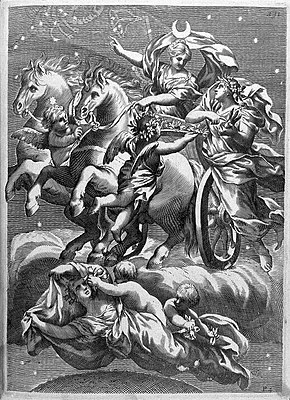
Source: Wikipedia
Festivals and Rituals
Throughout ancient Greece, various festivals and rituals were held to pay tribute to Selene, the goddess of the moon and the night. One such revered event was the Seleneia festival, which took place in the city of Elis and brought communities together to offer prayers and gifts to Selene. As the ruler of the night, Selene was implored for her blessings and protection over the upcoming nights, recognizing her important role in guiding travelers and providing comfort (Dhar).
Another significant ritual associated with Selene was the Nocturnal Sacrifices, a practice that held deep symbolic meaning and respect. During this ritual, devotees made offerings to Selene under the cover of darkness, seeking her guidance, protection, and the fulfillment of their desires. Typical offerings included incense, milk, and honey, representing the interconnection between Selene, the moon, and the nourishment of the night. This was a personal and profound interaction with Selene, calling upon her as the protector of the night and seeking her benevolent presence amidst the mysterious allure of the nocturnal hours (“Selene”).
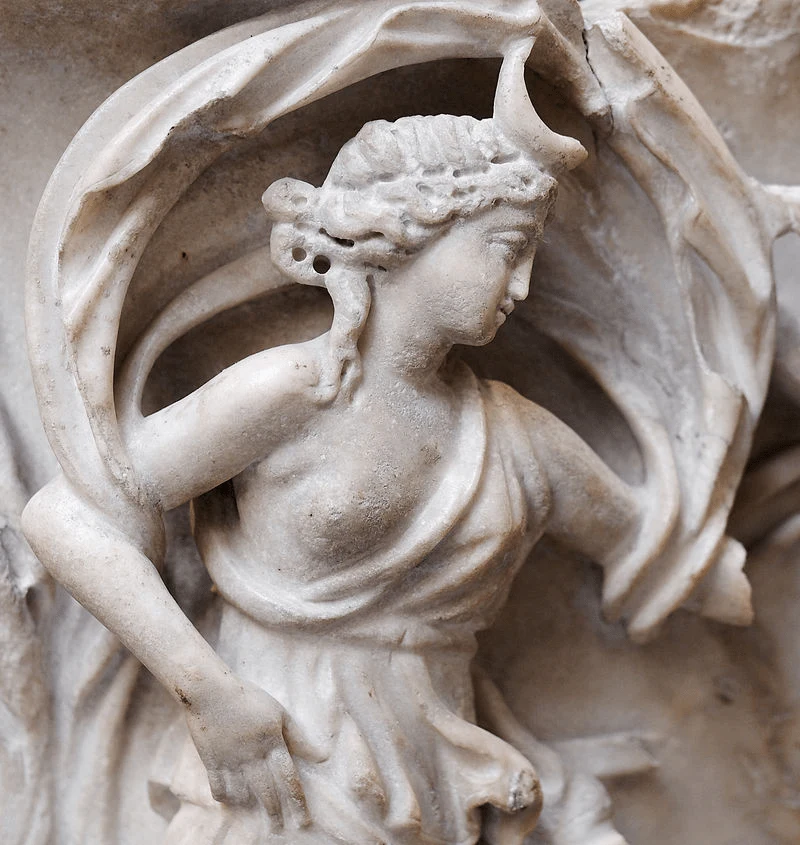
Source: Wikipedia
Legends associated with Selene
Throughout the annals of Greek mythology and beyond, Selene, the goddess of the moon, has undeniably etched her presence in the collective imagination. Her radiant persona in the night sky has served as a wellspring of inspiration for a diverse array of legends and narratives that underscore her beauty, formidable power, and enduring influence.
Origin story
The origin story of Selene, the goddess of the moon, is linked to her illustrious parentage, as narrated in ancient Greek mythology. According to the lore, Selene is the cherished offspring of the titans Hyperion and Theia. Hyperion personified the very essence of light, while Theia embodied the shining aether that enveloped the clear blue sky. The divine union between Hyperion and Theia yielded three extraordinary progeny: Helios, the resplendent sun; Eos, the enchanting dawn; and Selene, the ethereal goddess of the moon (“SELENE – Greek Goddess of the Moon (Roman Luna)”).
As the lunar deity, Selene inherited the brilliant attributes of her celestial lineage and emerged as a radiant and enchanting deity, gracing the night skies with her beguiling presence and casting her silvery light upon the world below. The mythic tale of Selene’s parentage elucidates the cosmic order and the interplay of divine forces within the Greek pantheon.
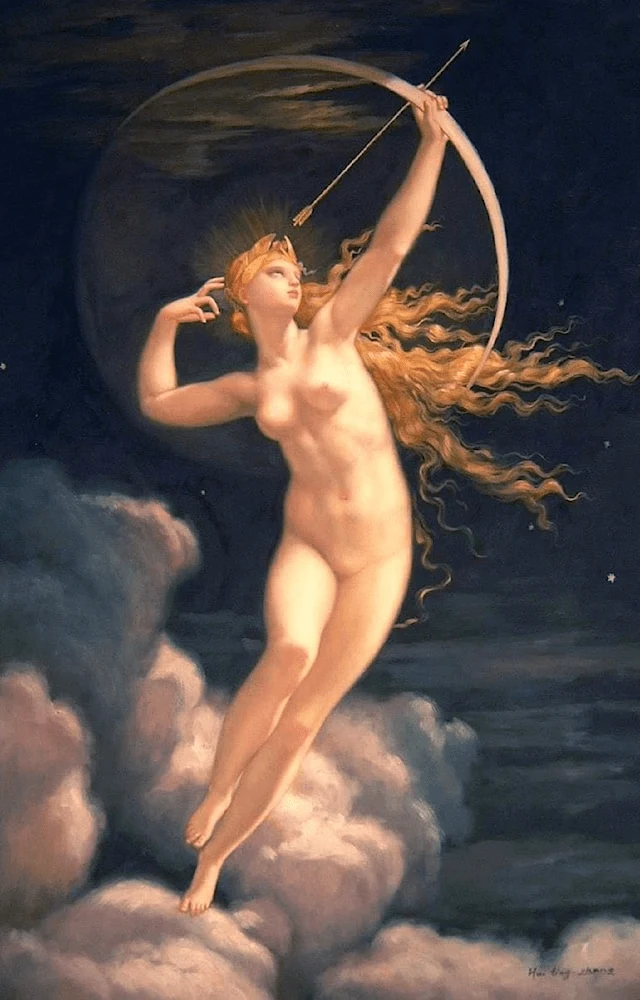
Source: Art Renewal Center
Selene and Endymion: A Moonlit Romance
One of Selene’s most famous legends involves her passionate love affair with Endymion, a handsome shepherd whose beauty deeply enamored the goddess. According to this enchanting tale, Selene would descend from the heavens each night to visit Endymion as he slept, bestowing the tender embrace of her moonlight upon him. This nightly rendezvous beneath the moon’s luminous gaze was a testament to Selene’s profound love for the mortal shepherd.
Selene was so taken by Endymion’s unparalleled beauty that she beseeched Zeus, king of the gods, for an extraordinary boon. She implored Zeus to grant Endymion eternal youth and an unending slumber, ensuring he would remain eternally beautiful. Moved by Selene’s ardent love, Zeus accepted her request. Endymion became the perpetual beloved of the moon goddess, destined to repose in an eternal and ageless sleep (Dhar), forever cherished by Selene, his beloved goddess.
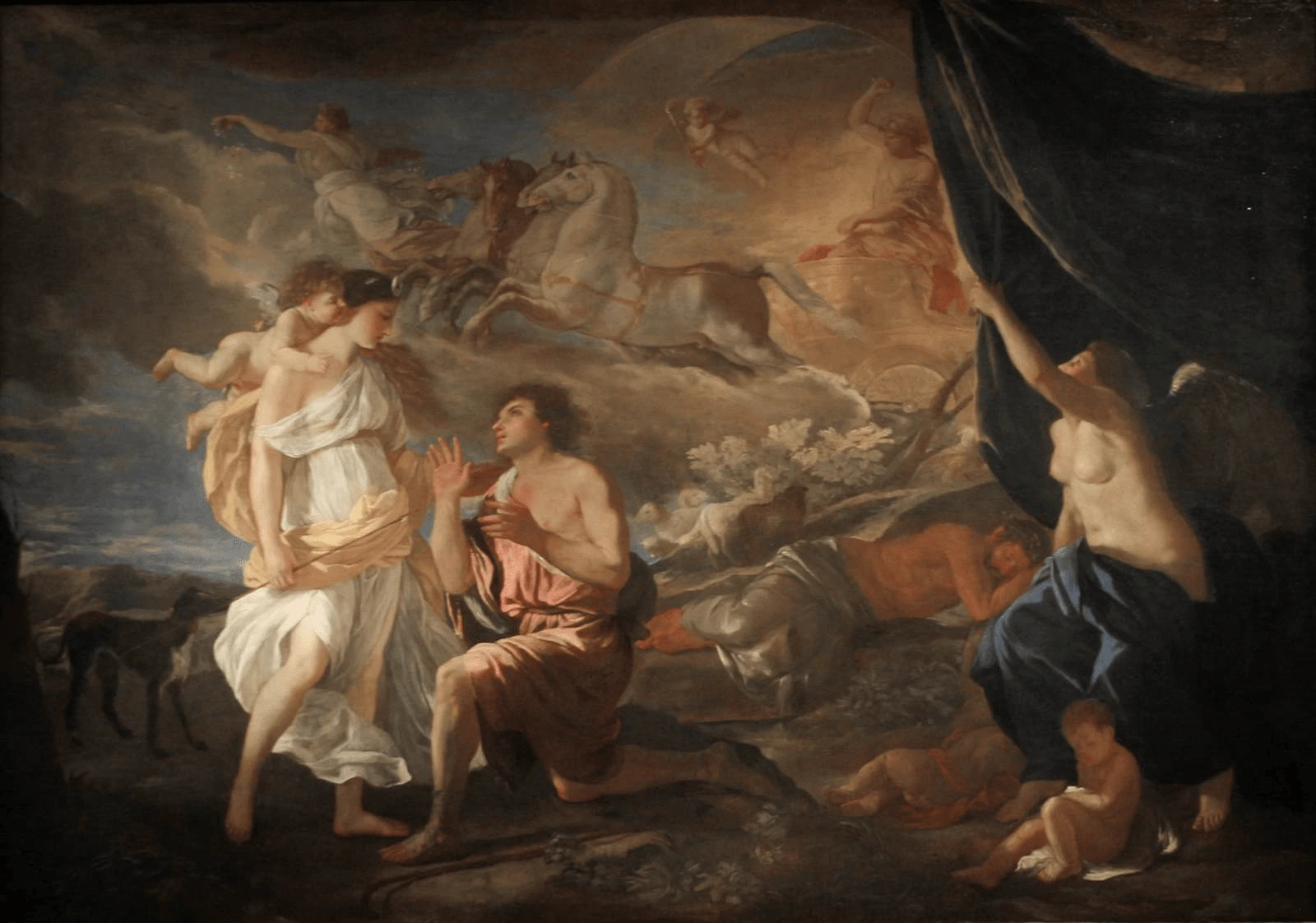
Source: Web Gallery of Art
The Divine Struggle: A Mythical Tale of Moonlight and Victory
In a compelling myth that showcases Selene’s significance in the celestial realm, she plays a pivotal role in the conflict between the Pantheon, a race of pre-Olympian giants, and Zeus, the king of the gods. As an ally of Zeus, Selene uses her radiant moonlight to become a weapon in the divine struggle. According to this legend, Selene’s luminous presence was summoned to the battlefield when the Pantheon challenged Zeus for supremacy. Her role was to illuminate the night sky and create a dazzling spectacle that would disorient and deter the Pantheon. As the goddess of the moon, Selene’s silvery glow bathed the battlefield in an ethereal light, dazzling the giant adversaries. This radiant display was instrumental in the Pantheon’s eventual defeat, as they could not contend with the brilliance of the moonlight.
Selene’s involvement in this myth underscores her role as a symbol of the night and a celestial force that aided the king of the gods in maintaining divine order and authority (Dhar).
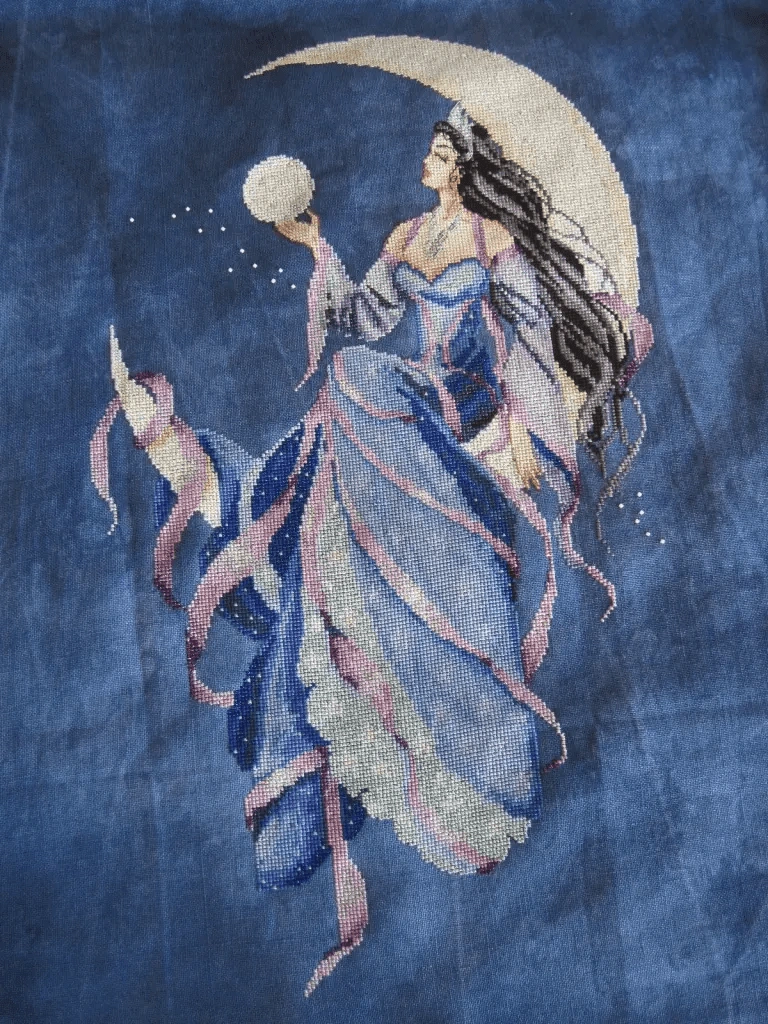
Source: Rosy BVM
Influences of other religions/cultures on Selene
The interplay between diverse cultures and religions has indubitably influenced the perception of Selene, the goddess of the moon, transcending the constraints of Greek mythology. This influence is particularly conspicuous in the amalgamation of Greek and Roman mythology. In Roman mythology, Selene merged seamlessly with Luna, the Roman goddess of the moon. Roman Luna often exhibited a more subdued demeanor than her Greek counterpart despite their closely aligned attributes and narratives. This syncretism facilitated a seamless transition of Selene’s veneration into the Roman pantheon, ensuring her continued recognition and worship as the lunar goddess (“Selene”).
Furthermore, the concept of a lunar deity, associated with femininity and the moon’s cyclical phases, resonates across various cultures and religions worldwide. The enduring appeal of lunar symbolism is evidenced in diverse mythologies, such as Egyptian, Hindu, and Norse, where lunar deities hold prominent positions. For instance, the Egyptian goddess Isis is closely linked to the moon’s cycles, paralleling Selene’s role. In Hinduism, the lunar deity Chandra is celebrated, while Mani personifies the moon’s influence in Norse mythology.
These cross-cultural influences underscore the universal fascination with lunar symbolism and the lasting significance of Selene’s character in the broader context of world mythology. Selene’s legacy extends far beyond the confines of Greek mythology, as her celestial dominion and mystical connection to the moon continue to inspire awe and reverence across the tapestry of human belief systems and cultures.
Modern appearances
The presence of Selene has been widely recognized in modern literature, where she is often used as a symbol of the supernatural. It is not uncommon for writers and poets to invoke her name to convey the timeless beauty and mystery associated with the moon. Similarly, artists have long been charmed by her luminous grace, capturing her essence in countless works of art. Her portrayal in visual mediums has been known to cast a magical aura over the canvas, with her silver glow evoking a sense of celestial radiance. Selene has become a prominent figure in Pop Culture, particularly in fantasy and mythological-themed films and TV series. Her representation as a symbol of the night and the moon’s mystical power often adds depth and mysticism to these narratives. For example, in the “Underworld” film series, Selene is a powerful vampire with attributes reminiscent of the moon goddess, such as enhanced speed and agility (Wikipedia Contributors).

Source: Wallpape Flare
Final thoughts
The goddess Selene has a rich and captivating history in Greek mythology. Her mysterious and luminous presence has left a lasting impression on cultural storytelling. Selene’s love affairs and contributions to Greek mythos have made her recognizable across different mythological traditions. Even today, Selene continues to inspire artists and captivate imaginations, showcasing her timeless beauty and significance. As a key figure in the pantheon of ancient deities, Selene’s light continues to illuminate human creativity and fascination.
References
Dhar, Rittika. “Selene: The Titan and Greek Goddess of the Moon | History Cooperative.” History Cooperative, 20 Sept. 2022, historycooperative.org/selene-greek-goddess-of-the-moon/.
Miate, Liana. “Selene.” World History Encyclopedia, 23 Jan. 2023, www.worldhistory.org/Selene/.
“Selene.” Mythopedia, mythopedia.com/topics/selene.
“SELENE – Greek Goddess of the Moon (Roman Luna).” Theoi.com, 2000, www.theoi.com/Titan/Selene.html.
Wikipedia Contributors. “Selene.” Wikipedia, Wikimedia Foundation, 30 Jan. 2019, en.wikipedia.org/wiki/Selene.
Did we miss something? Do you know another aspect of this legend? Don't hesitate to reach out!
Like this project
0
A client hired me to write several informative pieces on Greek Goddesses, and this blog post centers around the Goddess of the Moon, Selene.
Likes
0
Views
1106
Tags
Ghostwriter
Blog Writer



